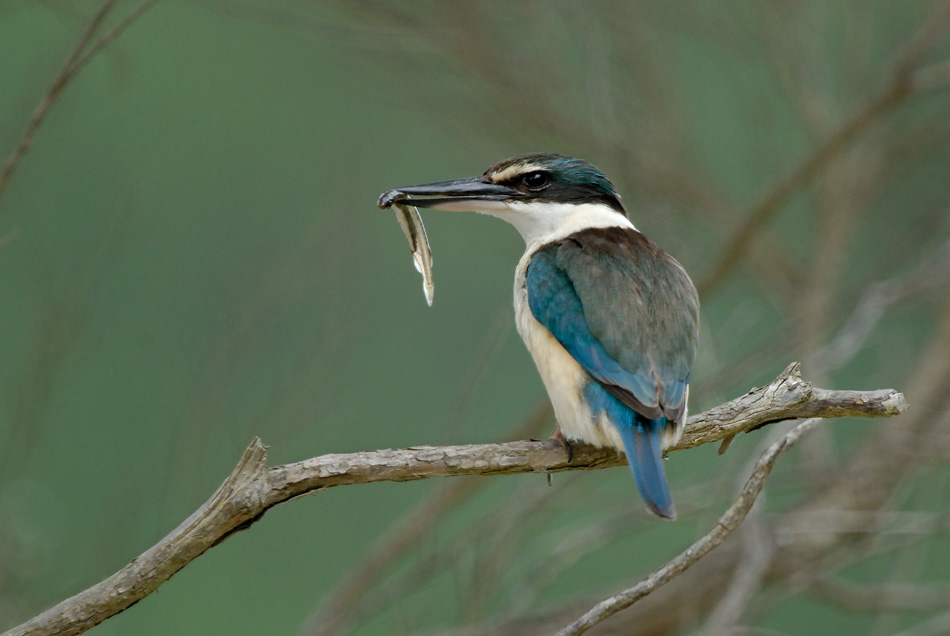The Kingfisher: A Little Bruiser
Guest blogger: Campaign Manager for the Kingfisher, Stephanie Gray.
If I were to paint our Sacred Kingfisher in caricature, I’d give him a little leather jacket in midnight-blue.

The Kingfisher, Craig McKenzie
For he is a thug. A stunning little predator. A handsome, hard-headed, supremely successful species that excels at pulverising the small prey he swoops upon.
Skinks, silvereyes and dragon-flies are all flung against fence posts and dashed on river rocks until every bone is broken and they can then be swallowed whole.
The Sacred Kingfisher, Kotare, relishes this regal diet. He is not (surprisingly) not that fussed with fish but will raid your goldfish pond when wild food is scarce. For his appetite, and for love of the kingfishers in my seaside neighbourhood, I nominate the Kotare as Bird of the Year.
Although not as family-friendly as the Kereru, championed by Kiri Te Kanawa this year, and although not as graceful as the Pied Stilt (Poaka) at the heart of Sam Hunt’s campaign, the Kotare nonetheless deserves your vote.
I admire their gloss, their muscle and keen eye. I like that they can be found nationwide—on sheltered coasts, marine harbours, wetlands, open country, forests, in suburban parks and gardens.
Right now, in spring, they are flocking back to the coast and to cities after a winter weathered inland. In monogamous pairs they will hunt out nest-spots in clay banks, and will take turns to fly at the bank like torpedoes, using exceptionally robust skulls to hammer a little hole that they then excavate.
Alison Balance and Rod Morris’ “Beautiful Birds of New Zealand” explains how the birds’ skulls are brilliantly structured to absorb the shock. Geoff Moon’s remarkable photos of Kingfishers piercing the skin of ponds convinced me of their physical, unusual beauty.
Most recently I read of the Kingfisher who approved (as a god in the bird’s form), human sacrifice in the 18th Century South Pacific. The following excerpt is from Anne Salmond’s “The Trial of the Cannibal Dog”.
“After this [the human sacrifice] the eye and the hair were taken back to the priests who sat on the beach. When a kingfisher cried our in the trees around the marae, Tu seemed pleased, remarking to Cook, ‘That’s the Atua [god] speaking.’”
If Captain James Cook were alive today, I’m sure I could convince him to vote for the Kotare as Bird of the Year. Especially if I buttered him up with a Tahitian baked pudding using the 18th Century recipe of breadfruit, banana and coconut cream that he drooled over in his letters home to England.
As for your good selves, I’ll trust you to consider the Kotare a worthy candidate—to see the light in his eyes, admire his fine diving and dignified character for which the Sacred Kingfisher was named.
To vote for your favourite bird go here –http://www.forestandbird.org.nz/poll. Polls close on October 14.
